The last few centuries have seen people around the world grow much taller. This trend is typically attributed to improved nutrition, hygiene, and health care, reducing the energy wasted on fighting disease and enabling more people to reach their genetic potential. Some also posit that sexual selection—specifically female preferences for taller men—has played a significant role. This idea isn’t entirely unfounded. ‘Tall’ is, after all, the first word in the phrase ‘tall, dark and handsome’, and research consistently finds that women tend to prefer taller men. In ancestral environments, greater height may have signalled status or the ability to protect and provide. What about today—does height confer a fitness advantage to men?
Are tall men more fruitful?
Stulp & Barrett (2016) kindly compiled a table summarizing studies on the relationship between height and reproductive success. Among men in Western populations, 7 out of 11 studies reported a curvilinear effect—typically meaning that both very short and tall men had fewer children, with little difference across the middle of the height distribution. Two studies found no effect, and two reported a positive effect. You can probably guess which two are cited on the ‘scientific black pill’ page of the incel wiki, which falsely claims that ‘other studies have also confirmed these findings’.
In non-Western or non-industrial populations, only 2 of 13 studies showed a curvilinear effect, eight found no effect, two a negative effect, and just one a positive effect.
For women, shorties were generally more fertile.
Let’s take a closer look at some of these studies, beginning with the two on Western populations that showed a positive effect of male height, and which have been repeatedly cited as conclusive proof that taller men enjoy a reproductive advantage.
Mueller & Mazur (2001) examined a sample of 437 surviving military officers from the 1950 graduating class of the United States Military Academy. They found that men in the tallest quartile were less likely to be childless and had more children. Interestingly, those in the shortest quartile didn’t have fewer children than those in the second or third quartiles. The authors interpret this as evidence of ‘unconstrained directional selection for tallness in men’.
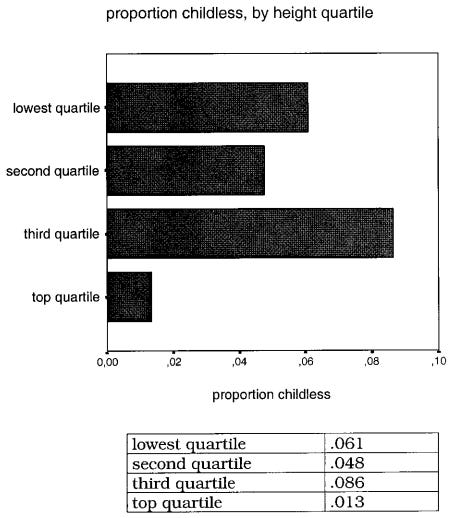

Pawlowski et al. (2000) examined the medical records of 3,201 healthy Polish males aged 25–60 who underwent compulsory medical examinations between 1983 and 1989. They found that childless men were shorter than those who had fathered at least one child, and that height was positively associated with number of children.
One potential limitation of these studies is that they selected for healthy individuals, though it’s not entirely clear whether being short or tall comes with more health complications that could impede relationships. In any case, in neither of these studies were the effect sizes anything to write home about.
Vetta (1975) re-analysed data from 2,616 Harvard men for whom no effect of height had originally been reported. An inverted U-curve was revealed, whereby both short and tall individuals had fewer children.
Nettle (2002) analysed data from 4,586 men with available height and reproductive data in the 2000 follow-up of the UK National Child Development Study, when the participants were 42 years old. Despite this study also being frequently cited as demonstrating a link between male height and reproductive success, no significant differences in offspring number were observed across height deciles or quartiles. If anything, the tallest quartile sired fewer children than the others. The study tested whether this was related to taller men being more educated and educational attainment reducing fertility, but splitting the sample by education and occupational class didn’t meaningfully affect the results.
There were, however, more childless men in the bottom decile (114) than expected by chance (93.5), but this effect wasn’t detected when expanded to the bottom quartile. The top decile was also more likely to be childless, but this effect didn’t quite reach statistical significance.
Stearns et al. (2012) utilised data from 2,655 men and 2,226 women in the Framingham Heart Study, born between 1892 and 1956. Significant stabilising selection on male height was observed, as well as significant negative directional selection on female height.
Stulp et al. (2012a) analysed data from the Wisconsin Longitudinal Study, whose subjects were born between 1937 and 1940. Height data was available for 3,578 men. There was no significant linear effect of height on number of children born. However, once again this masked an underlying quadratic relationship: the optimum height for reproduction was 177.42 cm, or about 5’10.
When controlling for age at first marriage, height no longer significantly predicted the reproductive success of married men, so average height men marrying earlier can at least partially explain the relationship. Controlling for education and income didn’t significantly affect the results, and height was unrelated to the proportion of children born surviving to age 18 or to the likelihood of those children marrying.
To put height’s effect into perspective, they compared the change in deviance when removing height, income, and education from the final model. Income’s effect was some 2.8-fold and education’s 4.5-fold that of height.
Stulp et al. (2012b) analysed data from WLS respondents’ siblings. In sibling pairs of average height, male siblings had relatively more reproductive success, whereas in shorter pairs, female siblings did.
Silventoinen et al. (2013) analysed data from the Finnish Twin Cohort Study, with a final sample of 3,595 male and 4,235 female twin individuals. Surviving participants were aged 51-59 at the time of the 2009 follow-up. Men in the third quintile of height had the lowest probability of being childless. A similar pattern was observed among twin pairs discordant for height, suggesting that it wasn’t mediated by childhood family background. Shorter women had an earlier age at first birth.
There are also a few additional ones to go over.
Lidborg et al. provides data from a sample of 2,301 Swedish male twins used in another study, which show no correlation between height and number of offspring.
Stulp et al. (2015) examined a sample of 42,612 Dutch individuals born between 1935 and 1967. Among men, height showed a curvilinear association with number of children and the likelihood of having any children, this time with taller than average men being favoured. The relationship appeared to be partially mediated by education, income, and health. Very tall men were more reproductively successful than moderately tall men within their current relationship, though this didn’t result in higher fertility overall due to them tending to enter these relationships later.
Tao & Yin (2016) found a weak and only marginally significant effect of height on the likelihood of having at least one child and the number of children in an indigenous Taiwanese sample, with each additional centimetre increasing the probability by 0.002.
I got the raw data from the Hadza sample in Sorokowski et al. (2017) and found a correlation of r = −.05 (N = 86) for men.
Hugh-Jones & Abdellaoui (2022) examined UK Biobank data from 409,629 White British individuals to assess how polygenic scores for various traits predicted fertility outcomes. When it came to height, a nonsignificant, slightly negative association emerged for men, and a significant negative association for women. They also inferred the effects in the parental generation using the number of siblings reported by participants, which showed no evidence that the effect of height had shifted.
Međedović (2022) found a nonsignificant correlation of −.07 between height and reproductive success (having offspring) among 481 Serbian men with a mean age in their late 20s, and a significant −.07 correlation among women.
Hugh-Jones & Edwards (2024) found a negative effect (though it wasn’t statistically significant due to a limited sample size) of polygenic height scores on relative lifetime reproductive success in the US Health and Retirement Study, among White men and women whose fertility would’ve been largely completed by 2010.
Some quick additional analyses
I analysed the National Survey of Family Growth (2006–2017), with a sample size of 20,860 men. In a Poisson regression model controlling for age, ethnicity, and educational attainment, neither a linear nor a quadratic effect of height was detected. The same held for childlessness in a logistic regression model.

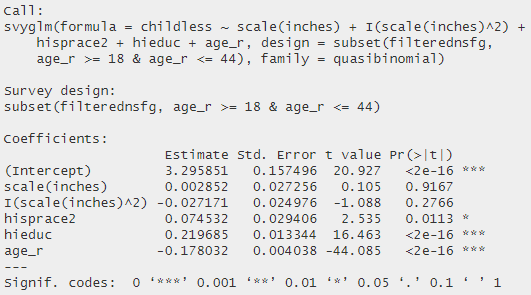
Below is a graph for mean number of children among non-Hispanic White males aged 25–44 by height, closely mirroring the stabilising selection pattern observed in previous studies. A significant quadratic effect is found when limiting the analysis to this subgroup. For women, the previously observed negative effect was found (results not shown).
The Korean General Social Survey (2010–2021), with a sample size of 1,931, also showed no effect of height on number of children. While no linear effect was found for childlessness, including a quadratic term revealed a significant association with height.


Was the rise in height driven by selection?
The average Dutchman grew by roughly 18 cm over the past two centuries. A study by Thompson et al. (2022) aimed to determine the extent to which this secular trend could realistically be driven by reproductive variance by examining 3,396 men born between 1850 and 1900 who survived to 40. They noted how the sample used by Stulp et al. (2015) was born during a period when the trend was already slowing, making it unclear whether height was linked to fertility outcomes during the period of most rapid growth.
Height was curvilinearly associated with the risk of remaining unmarried: men slightly above the mean had the lowest probability of being unmarried, whereas those 2 SD below had the highest, and those 2 SD above also at elevated risk. A similar curvilinear pattern emerged for number of children: men slightly below the mean had the highest predicted probability of having 5–7 children, while those at both extremes had the lowest probabilities.
Height didn’t significantly predict the likelihood of being married and childless, married with one child, or married with 8+ children, relative to the reference group of being married with 2–4 children. However, a positive linear association was observed between height and the relative risk of having one child and of having 2–4 children. There was no association between height and infant survival.
Stulp et al. (2023) estimate that if selection had been the only factor driving the secular trend from 1850 to 2000, the average number of children produced would have to triple with each SD increase in male height. With an average of four children, this would mean men 3 SDs above the mean would need to father around 100 children each. Alternatively, if the trend were driven solely by only the tallest men reproducing each generation, the threshold would need to be the tallest 37%. Even six generations of selection in which the shortest 10% of men were barred from reproduction would account for only a 3.5 cm increase—far short of the 17.2 cm observed.
In simulations based on data from Stulp et al. (2015), phenotypic selection can account for at best 0.36 cm of height gain across six generations. In simulations informed by data from Thompson et al. (2022), this figure drops to 0.07 cm. In reality, even these negligible estimates are upper bounds, as the model excludes selection on women’s height, likely underestimates generation time, and doesn’t factor in age at first birth.
Whatever the case, it looks like the trend has levelled off and may have even begun to reverse—though immigration probably plays a significant role in this.
Howe et al. (2022) found evidence for recent polygenic adaptation for height in European populations, though the effect size was quite modest (r = 0.012, N = 149,174). No significant changes in height-related genetic variants were observed in the Chinese population dataset.
Irving-Pease et al. (2024) calculated ancestry-specific polygenic risk scores, showing that height differences between Northern and Southern Europeans are strongly predicted by steppe admixture rather than selection.
Piffer & Kirkegaard (2024) observed a decline in polygenic height scores from the Paleolithic to the Neolithic period, consistent with archaeological evidence. Polygenic height scores peaked in medieval Dutch, English, and Viking populations. The lower scores observed in modern British populations may be due to a decrease in continental ancestry rather than negative selection against height.
Possible explanations and final remarks
Rather than ‘unconstrained directional selection for tallness’ eventually leading to the extinction of manlets and the breeding of a new race of Nephilim, the weight of the evidence points to male height in most societies being subject to stabilising selection, with men of both vertical extremes producing fewer children, and even then, the strength of the effect is far from impressive. This means that short kings and queens will not be hanging up their crowns any time soon. In fact, for better or worse, their reign has only just begun. Because short and tall men are passing on their genes at similar rates but short women are popping out the most babies, future generations won’t just be numerically but also physically smaller.
It’s intuitive to assume that if women consider a trait desirable, it should strongly predict mating outcomes. This apparent paradox has also cropped up in previous articles on height showing what to many is a surprisingly little association with sexual and romantic outcomes. What are we to make of this? Is it another case of ‘look at what they do, not what they say’? Stulp et al. (2013) provide some evidence in this direction. Using speed-dating data, they found that men who fell short of women’s stated height requirements only incurred a minor penalty when it came to actual choices. Also, while the effect of height in these experiments is noticeable, it’s not very large—a lot smaller than that of female BMI, for instance.
While there is a consistent preference for taller men, there is also a preference against being towered over. Men also prefer women don’t need a stool to kiss them. This dynamic is reflected to some extent in actual pairings. This is noteworthy because, as we’ve seen, shorter women tend to be more fertile. One reason is that women face a trade-off between investing energy in growth versus reproduction. This is why short women reach sexual maturity earlier. Also consistent with a slower ‘life history strategy’, height shows a small positive genetic correlation with IQ, which as is well known is itself under negative selection. Taller women in particular are more likely to delay childbearing as they pursue higher education and professional life. Advancements in obstetric care have helped to offset the higher risk of birth complications faced by shorter women.
While shortness carries elevated risks of health problems such as heart disease, tallness is associated with elevated risks of cancer, atrial fibrillation, venous thromboembolism, and certain musculoskeletal diseases (Lai et al., 2018). Nettle (2002) found that men in both the shortest and tallest deciles were more likely to suffer from long-standing illnesses, which in turn raised the likelihood of being childless or not in a relationship.
Finally, humans are a relatively ‘monomorphic’ species in which partner selection goes both ways. Even in nonindustrial societies that permit polygyny, the reproductive skew between men and women isn’t too dissimilar. If men’s preferences for low waist-hip ratios don’t matter much for women’s ‘reproductive success’, women’s preferences for taller men probably shouldn’t matter much either. If we look at the traits that most strongly predict higher fertility in a modern developed nation, they’re mostly those related to impulsivity, risk-taking, and sociability (Hugh-Jones & Abdellaoui, 2022). In other words: Just be confident, bro.
If height had in fact been under ‘unconstrained directional selection for tallness’, it’d be surprising that so much additive genetic variance still remains—granted that height is highly polygenic and less heritable in more variable environments, which would attenuate the strength of selection. One could argue that women’s mate choices were historically constrained by factors such as arranged marriage and economic dependence. However, there is no sign that the effect of height on men’s relationship status or sexual partner count has become stronger in more recent years.
I have earnestly sought to find the game-changing effect that black pillers and a large portion of the internet at large are convinced height has, but have largely come up empty. At this point in the journey, it’s safe to say that it’s just not there. There may be a little more room to make a case for its effect on the ‘quality’ of partners, but in terms of psychological outcomes, that doesn’t seem to matter much either1—whether due to the ‘love is blind’ effect or hedonic adaptation and variation in subjective satisfaction being shaped more by internal than external factors.
See the ‘scientific white pill’ section in ‘Do looks matter in dating?’ article to see what I mean.



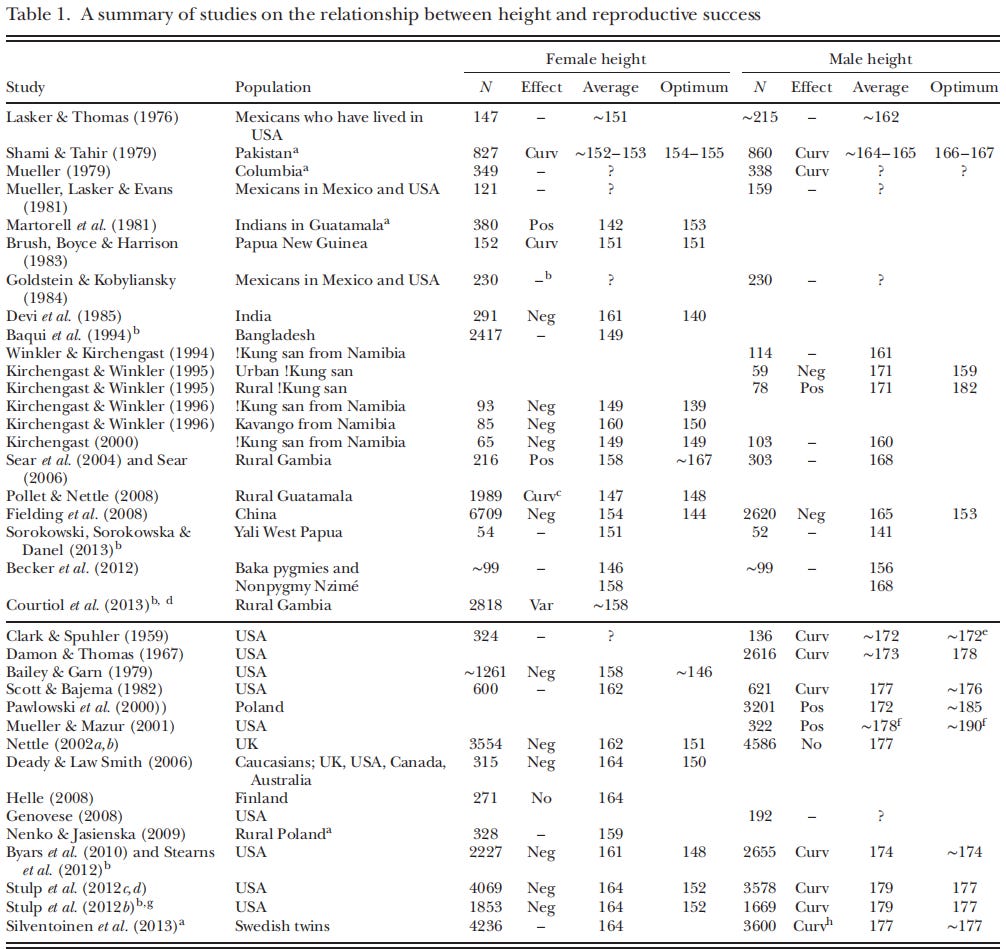

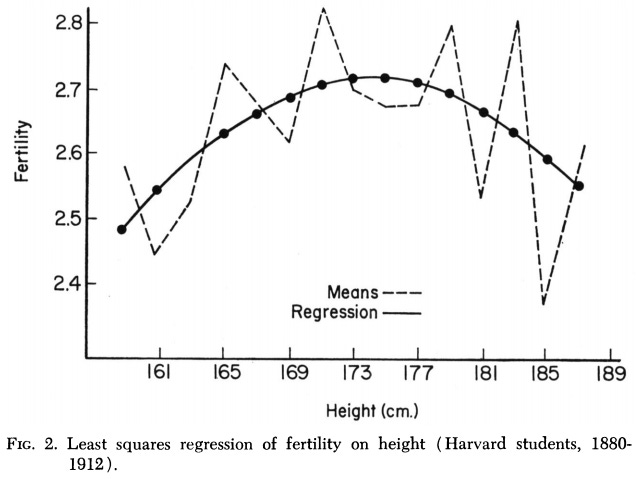







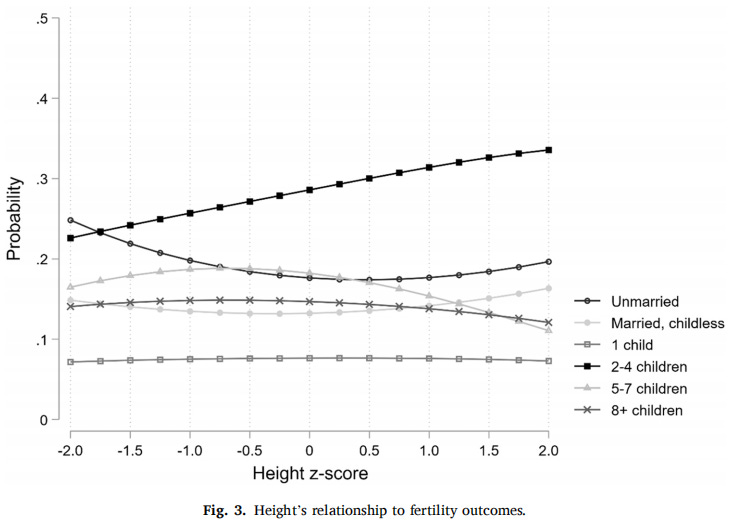
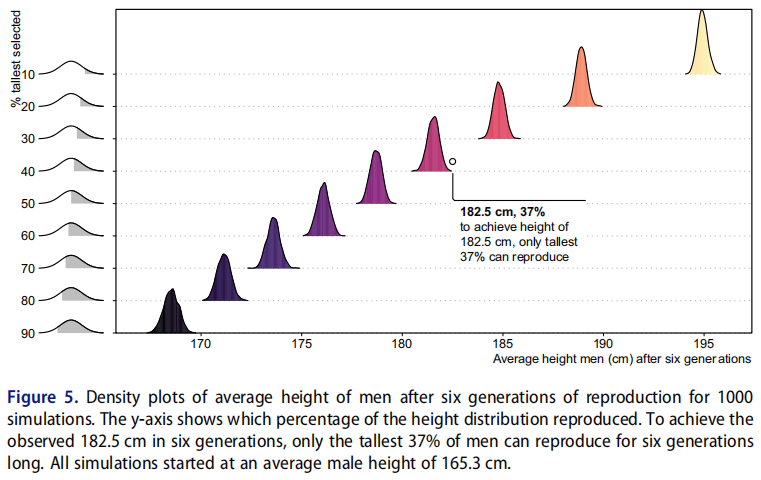
I don't know who you are, and you never give an indication, but your level of dedication and deep dives into the data on this topic is admirable.
Correct me if you think I'm wrong, but I believe height has an impact on income. Therefore, maybe short kings are breeding more because poor people, in general, breed more. But regarding the Dutch data, it seems like being taller gives you a better chance of living a "normal" life, with 2-4 kids being normal.